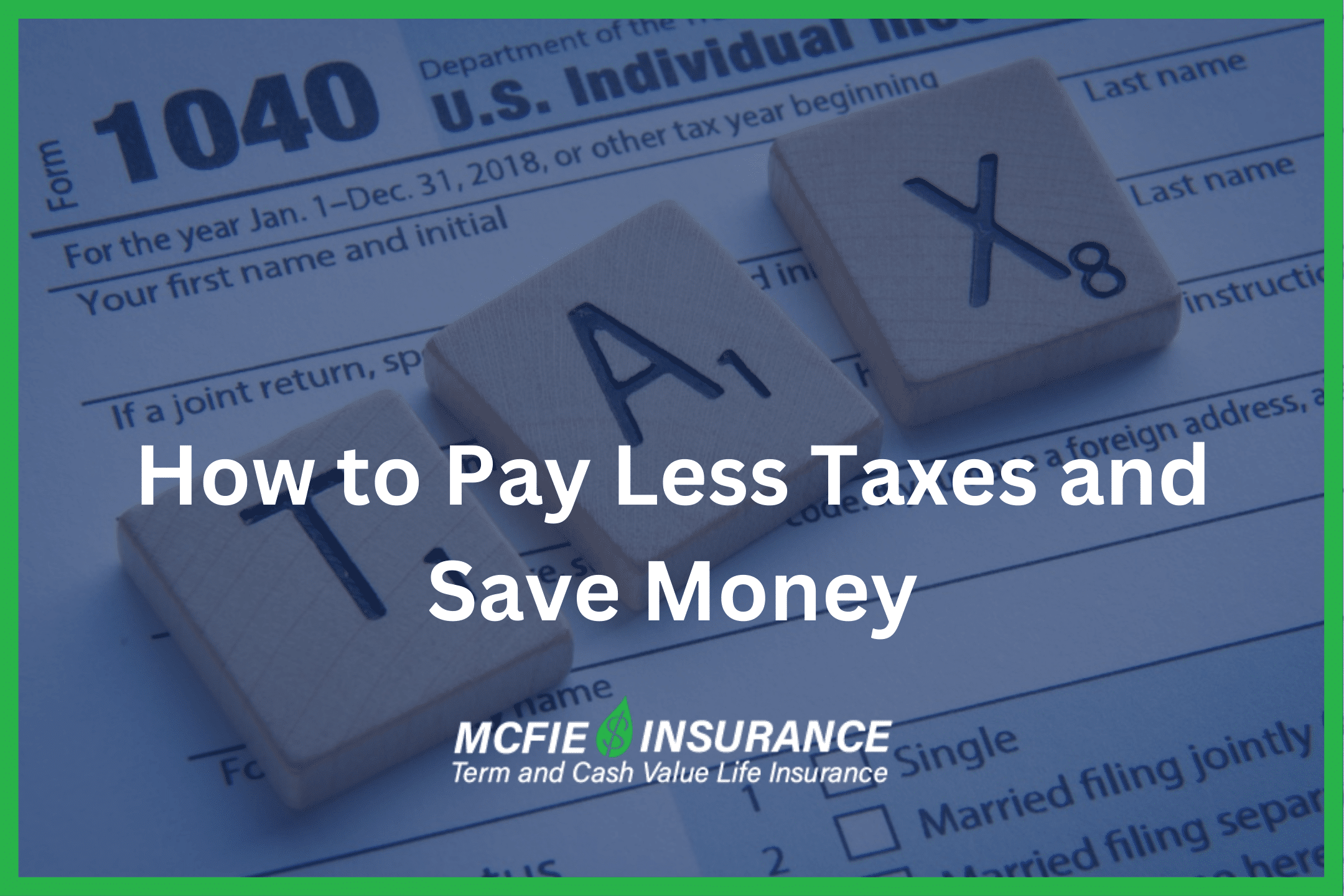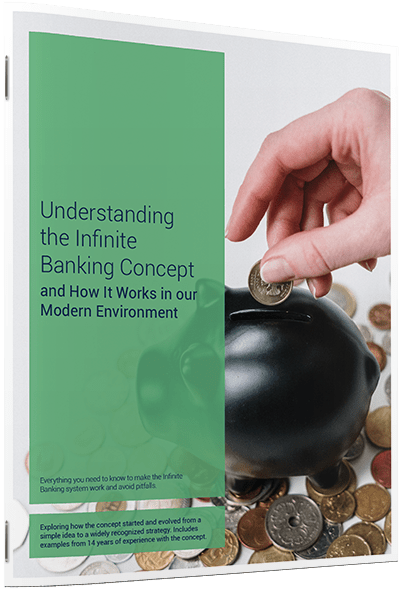702-660-7000
702-660-7000

While it’s natural for people to be cautious giving away their income through taxes, there are legitimate strategies available to reduce the amount they owe the government annually. Come with McFie Insurance on a journey of all the potential ways to save money and pay less taxes.
If you’re self-employed, even just part-time, there’s a plethora of tax deductions awaiting you. Whether it’s expenses from freelance work or ride-sharing, you can save significantly on your tax bill. Eligible deductions include business-related travels, advertising, professional memberships, and even specific utilities. But, remember, for intricate tax-saving strategies, always consult an accountant.
One strategy often overlooked pertains to home office deductions. If you’ve dedicated a particular space in your home exclusively for business, you can qualify for deductions. This might mean claiming a part of your rent or utilities.
Another unique approach involves renting out your home space for business purposes under the Augusta rule. Although it’s crucial the space isn’t your primary business location, this strategy lets you rent out a room in your home for up to 14 days without reporting this income. Yet, the rental rate must be consistent with local market prices.
Thinking of mixing business with leisure? If you intertwine vacation with a business trip, you might be able to claim certain expenses. However, always ensure that your claims are legitimate to avoid unnecessary complications with the IRS.
For businesses, another consideration is accelerating depreciation on business assets. In 2022, for example, businesses could claim up to 100% deduction on particular purchases. However, this deduction is set to decrease and will eventually phase out by 2026. Examples of this would be large business expenses, such as machinery in a factory, private planes or vehicles for transportation, computers, and furniture.
Business owners might contemplate adjusting their compensation structure. By shifting some income from salaries to owner distributions, they could potentially decrease their tax bill. But, this strategy requires professional advice to ensure IRS compliance.
Self-employed individuals bear the full brunt of the Federal Insurance Contributions Act (FICA), which levies a 15.3% tax on earnings for Social Security and Medicare purposes. In contrast, employees only shoulder half of this, with their employers covering the remainder. Thankfully, the IRS has made provisions for the self-employed.
They are permitted to deduct 50% of this tax from their income taxes without needing to itemize. This essentially means that half of what they pay towards Social Security and Medicare can be deducted from their taxable income. This significant deduction is beneficial as it effectively reduces their overall tax liability, allowing the self-employed to retain more of their hard-earned income. This happens by default, but you can change your compensation structure to maximize the effectiveness of a compensation strategy.
Several tax credits are tailored for those incurring higher education expenses. The American opportunity tax credit, designed for the initial four years of college, offers up to $2,500 annually per student. Not only does it reduce the amount of tax owed, but if the credit exceeds the tax liability, a refund of up to $1,000 may be issued.
Another valuable credit is the lifetime learning credit, worth up to $2,000 annually. It’s designed for ongoing education that enhances job-related skills. With the temporary pause on student loan interest due to COVID-19, leveraging these credits can amplify future tax savings and reduce educational debt.
A 529 plan can be a good tool for individuals planning for their children’s future education or considering furthering their studies. Though federal tax breaks don’t apply to the contributions, numerous states provide deductions on state income taxes for contributions made. The beauty of the 529 plan lies in its tax-free withdrawals, provided they are used for educational purposes.
The flexibility of the plan also permits unused funds to be reassigned to other beneficiaries, including yourself, or used towards student loans. A recent addition allows transferring funds to retirement accounts, providing a versatile avenue for future financial planning while reaping tax benefits.

Understanding the Infinite Banking Concept and How It Works In Our Modern Environment 31-page eBook from McFie Insurance Order here>
For taxpayers who choose to itemize their deductions, there’s an option to include either state income tax or sales tax. For those residing in states without an income tax, the sales tax itemization becomes an attractive option. It’s crucial to remember that significant purchases can also be included in these deductions. However, it’s essential to be aware of the $10,000 deduction cap for state and local taxes.
By itemizing state sales tax, especially with substantial purchases, taxpayers can significantly reduce their taxable income, leading to potential tax savings and allowing them to retain more of their money. High sales tax items would include larger purchases like cars, boats, high end clothing, but are limited to the $10,000 deduction.
Donations made through payroll, checks, cash, or goods are deductible. You typically need to itemize, but post-2017 tax reform, many opt out. An alternative is a donor-advised fund, allowing for bundled donations over multiple years.
Having life insurance reserves can help with designing a stabilized charitable giving program that can handle large projects and then rebuild savings over time.
Once individuals reach the age of 73, they are mandated to begin taking RMDs from their retirement accounts. Unfortunately, these distributions are taxable. However, one strategy to minimize this tax burden is to donate these RMDs directly to charitable organizations. Not only does this make the distributions tax-free, but you can also support worthy causes. By opting for this strategy, retirees can simultaneously uphold their philanthropic values while saving on taxes.
Donating RMDs can be a win-win, enabling individuals to adhere to distribution requirements while ensuring their money makes a positive impact in society without the typical associated tax consequences.
When you sell assets like stocks or real estate, it’s crucial to accurately calculate the cost basis to determine the capital gains. One sometimes overlooked method is to include reinvested dividends in the cost basis, which increases the original investment amount and can reduce potential capital gains tax. This will primarily be for people who have recently inherited their parent’s 401k, IRA, distributed in 10 years at the tax rate of the heir.
Selling a house may subject you to capital gains tax. However, there are exemptions available. Importantly, funds spent on home improvements can also be added to the original cost of the house, reducing potential taxable gains. By strategically factoring in these considerations, homeowners and investors can significantly reduce their capital gains tax obligations.
Donating appreciated stocks is a dual-benefit strategy. It not only supports charitable organizations but also helps donors bypass capital gains tax on the appreciation. After donating, if you choose to repurchase the stock, your cost basis will reset, often at a higher value. This newer basis can be advantageous for future sales.
Some people opt for donor-advised funds for this strategy; however, direct stock donations to charities are equally effective. The essence of this tactic is to allow individuals to support causes they believe in while ensuring they aren’t unnecessarily burdened by taxes on their appreciated assets.
Military reserve members who travel more than 100 miles and stay overnight for duty can deduct their unreimbursed travel expenses. This can include lodging, meals, and transportation costs. For active-duty members, moving expenses due to changes in station are also deductible.
These tax breaks honor the sacrifices military members make and provide some financial relief. By taking advantage of these deductions, military personnel can significantly reduce their taxable income, ensuring they retain more of their hard-earned money.
Navigating the landscape of local and state tax opportunities can be rewarding. Even though recent federal reforms have eliminated or capped some deductions, many states provide incentives or offer different criteria that may be beneficial. Local and state agencies sometimes introduce additional deductions or credits not available at the federal level.
By staying informed and proactive about local tax policies, residents can maximize their savings, ensuring they leverage every available opportunity to reduce their overall tax liability.
The Earned Income Tax Credit (EITC) is a boon for many, especially those with lower incomes. For 2023, the EITC can be as much as $7,430, though the actual amount depends on one’s income and family size. What’s remarkable about the EITC is that even if you owe no federal income taxes, you could still receive a refund if eligible.
It’s designed to benefit those who work but have low to moderate incomes, helping reduce their tax burden or even turning it into a potential refund, ensuring more financial stability for the recipients.

An easy read and a perfect introduction to whole life insurance and The Perpetual Wealth Code™ Available in eBook or Audiobook format.
Download here>
One of the most straightforward methods to decrease your tax liability is contributing to a retirement account. The majority can take advantage of this method. When you deposit into traditional 401(k) and IRA accounts, you can lower your taxable income. Notably, these contributions grow without taxes until retirement. Alternatively, Roth accounts, which are post-tax, allow your funds to grow tax-free and be withdrawn tax-free during retirement. For traditional IRAs, even if you miss the end-of-year deadline for 401(k)s, you can contribute until the tax submission deadline.
Another beneficial approach is through Health Savings Accounts (HSAs). If you’re covered by a high-deductible health plan, you can reduce your taxable income by contributing to an HSA. Funds deposited into these accounts not only offer an upfront tax deduction but also grow tax-deferred. Moreover, you can use them tax-free for approved medical expenses. Leftover balances transfer to the next year, much like retirement accounts.
If you don’t have a high-deductible plan but your employer provides Flexible Spending Accounts (FSAs), you can allocate pre-tax dollars towards a variety of health-related costs. These might range from regular doctor visit copays to dental procedures. However, remember that any unspent money might be lost by year-end. It will be list in an FSA unless the plan offers a grace period of carry over.
The Inflation Reduction Act of 2022 extended tax credits for homeowners and businesses making energy-efficient improvements. These credits can be claimed for a variety of installations up to the year 2032. Investing in energy efficiency now can yield both immediate tax benefits and long-term savings on energy bills.
While gambling winnings are indeed taxable, there’s a silver lining for those who don’t always walk away winners. By meticulously recording gambling losses, these amounts can be used to offset winnings, potentially reducing the taxable amount.
It’s essential, however, to ensure proper documentation, as the IRS may require evidence in case of audits. This practice ensures that individuals are only taxed on their net gambling income, providing relief from potentially hefty tax bills on gross winnings.
Remember, the best way to keep your money away from casinos, is never gambling in the first place, consider something like whole life insurance, that isn’t a gamble.
When a policy owner takes a policy loan from a life insurance policy for investment purposes the interest on the loan can be a personal tax deduction.
This concept can be extended to business owners who take a policy loan, use it for deductible business improvements or expenses and the interest on this loan can be a tax deduction for the business, and help the business owner to get more money out of the company without payroll taxes.
Remember, while tax codes can evolve and change, these strategies are based on existing regulations. Always seek expert advice to make informed tax decisions.
 Ben T. McFie
Ben T. McFie
There's a lot of confusion around finance; there's so much to know and it's frustrating when you don't know enough to make the best financial decisions. I like to bring clarity to financial matters so people can make good financial decisions that will help them live wealthier more fulfilling lives.